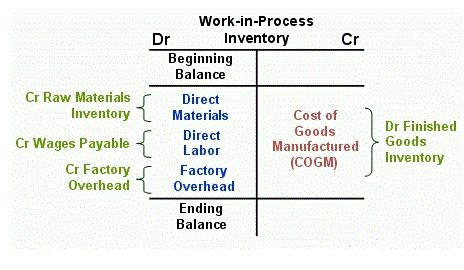
The final financial reporting statements remain the same in the balance sheet, income statement, and cash flow statement. Each separate legal entity has a separate financial accounting process and creates its own financial statements. So, what is the difference between standalone and consolidated financial statements? Standalone financial statements provide information on the financial position of a single entity, while consolidated financial statements provide information on the financial position of the entire group of companies.
- This section captures everything your company owns, both tangible and intangible.
- These statements are comprehensively combined by the parent company to final consolidated reports of the balance sheet, income statement, and cash flow statement.
- Noncurrent liabilities are liabilities which the company will pay off in the long run (in more than 1 year time).
- In conclusion, both consolidated financial statements and separate financial statements serve important purposes in financial reporting.
- The degree of overconsolidation is often quantified using the Overconsolidation Ratio (OCR).
- This is because it involves combining the financials of multiple entities, adjusting for any differences in accounting policies, and eliminating intercompany transactions.
List of semiconsolidated sand and gravel aquifers

Additionally, USGS will not be able to respond to inquiries until appropriations are enacted. The Pennsylvania Department of Labor and Industry enforces workplace safety regulations, while the Department of Environmental Protection oversees environmental laws, issuing fines and cease-and-desist orders when necessary. The Pennsylvania Human Relations Commission investigates discrimination claims in employment and housing, with authority to impose civil penalties and mandate corrective actions. The Department of State’s Bureau of Professional and Occupational Affairs regulates industries such as healthcare, legal practice, and real estate through licensing and disciplinary actions.
Cash Flow Statement Impact
Family law is governed by Title 23, covering marriage, divorce, child custody, and support. Pennsylvania recognizes both no-fault and fault-based divorce, with equitable distribution principles guiding marital property division. Child custody disputes are resolved based on the best interests of the child, considering parental involvement, stability, and any history of abuse. Title 42 governs judicial procedure, including rules for criminal trials, appeals, and post-conviction relief. Law enforcement agencies, including the Pennsylvania State Police and local police, investigate crimes and enforce statutes.
Consolidation Process
The bill is drafted, and the member signs it, thereby assuming its sponsorship. The Pennsylvania House of Representatives has published Making Law, a good overview of the Pennsylvania legislative process. The Pennsylvania General Assembly has published The Biography of a Bill, which also discusses the legislative process in text and graphics and gives tips on how to read a legislative bill. Article VI provides for the selection of public officers not provided for in the Constitution.
compaction of soil
Instead, it focuses on entities where a reporting entity has a significant financial interest or bears the majority of the risk and rewards. To further expand your research, you can browse both paper and electronic resources on SearchLib, our Library discovery tool, searching by title or keywords (e.g. consolidated vs unconsolidated “financial statement”). ► Check both the Consolidated & Unconsolidated statutes when using the official version of the statutes. Pennsylvania statutes are laws passed by the state legislature, the Pennsylvania General Assembly, which includes the PA House and PA Senate. Some House Committee transcripts and reports are available on the Pennsylvania General Assembly website.
Consolidated Leave
Parent companies with less than a 20% stake and no control of the subsidiary merely record the investment at historical cost or the purchase price on its balance sheet. However, if dividends are paid, which are cash payments to shareholders, the parent records the dividend income but does not record any investment income earned from the subsidiary. The entity is required to prepare the consolidated financial statement of all entities under control. Parent material is the underlying geological material (generally bedrock or a superficial or drift deposit) in which soil horizons form.
- The consolidation process involves combining the financial information of all the entities under the control of a parent company, eliminating intercompany transactions, and adjusting the financial statements for any differences in accounting policies.
- Non-consolidated leave policies separate different potential types of leave into categories with a separate amount/tranche of leave time offered for each category.
- Both GAAP and IFRS have some specific guidelines for entities that choose to report consolidated financial statements with subsidiaries.
- A subsidiary generally has its own financial statements if it is a public company; however, it is also included in the parent company’s consolidated financial statements, which aggregate the reporting results of all subsidiaries.
- The ratio of the maximum overburden pressure it has experienced in the past and the current overburden pressure is known as the ‘overconsolidation ratio’ (OCR).
More About the PA Statutes
Consolidated financial statements are a crucial tool in financial reporting that combines the financial information of a parent company and its subsidiary entities into a single, unified set of reports. This practice is particularly relevant when a parent company holds a controlling interest (typically more than 50% of the voting rights) in one or more subsidiary companies. It’s also important to note that the process of preparing consolidated financial statements can be more complex than that of standalone financial statements. This is because it involves combining the financials of multiple entities, adjusting for any differences in accounting policies, and eliminating intercompany transactions. As a result, companies may need to invest in specialized software or consulting services to help them consolidate their financial statements accurately.

How Pennsylvania Statutes Are Organized and Enforced
For a group company, it is referred to as the report which includes parents and its collective business. The parent’s share of the subsidiary’s net income is recognized on the income statement under the equity method. This can lead to smoother earnings compared to consolidation, where the subsidiary’s entire income is included. The main advantages that non-consolidated leave policies provide employers is a greater degree of hands-on control that may enable them to better tailor leave policies in line with the needs of both the Bookkeeping for Chiropractors organization and the employees. A consolidated balance sheet is typically prepared by the parent company’s finance or accounting team.
What is the Consolidated Balance Sheet?
This approach allows Berkshire to recognize its share of these companies’ earnings without consolidating their financials. Companies use unconsolidated subsidiaries for various reasons, including risk management, regulatory compliance, and strategic flexibility. These articles and related content is the property of The Sage Group plc or its contractors or its licensors (“Sage”). Please do not copy, reproduce, modify, distribute or disburse without express consent from Sage.These articles and related content is provided as a general guidance for informational purposes only. These articles and related content is not a substitute for the guidance of a lawyer (and especially for questions related to GDPR), tax, or compliance professional. When in doubt, please consult your lawyer tax, or compliance professional for counsel.


This is important for businesses with subsidiary companies as it allows them to view the financial position of the entire group, rather than just one part of it. Consolidated financial statements, on the other hand, provide a comprehensive view of the financial position of a group of companies, including parent companies and subsidiaries. The consolidation process involves combining the financial information of all the entities under the control of a parent company, eliminating intercompany transactions, and adjusting the financial statements for any differences in accounting policies. An unconsolidated subsidiary is a company that is owned by a parent company but is not included in the parent’s consolidated financial statements. Instead, the parent company accounts for its investment in the subsidiary https://comprenowhats.com.br/arezzobalneario/2022/11/07/periodic-expenses-the-guide-to-budgeting-and/ using the equity method or at fair value. This approach contrasts with consolidated subsidiaries, where the parent combines the subsidiary’s financials with its own.